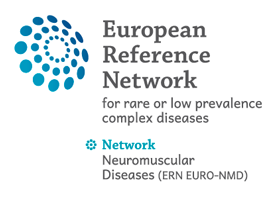14 Sep 2020
Distal muscle weakness is a common and early feature in long-term enzyme-treated classic infantile Pompe patients
Authors:
J. J. A. van den Dorpel, E. Poelman, L. Harlaar, H. A. van Kooten, L. J. van der Giessen, P. A. van Doorn, A. T. van der Ploeg, J. M. P. van den Hout & N. A. M. E. van der Beek
Background
Enzyme replacement therapy (ERT; alglucosidase alfa) has improved the prospects for patients with classic infantile Pompe disease considerably. However, over time we noticed that many of these children exhibit distal muscle weakness at an early age, which is in contrast to the primarily proximal and axial muscle weakness in patients with late-onset Pompe disease. This was reason to study the prevalence and severity of distal muscle weakness, and the sequence of muscle involvement over time in patients that had learned to walk under ERT.
Methods
In this prospective, single-center cohort study, we studied 16 classic infantile patients. We used video recordings that were made during regular standardized assessments to investigate distal muscle function (active dorsiflexion of the feet during walking; ability to use a pincer grasp/actively extend the fingers) and proximal muscle function (standing up from a supine position; raising the arms above the head).
Results
Median age at start of ERT was 3.2 months (0.1–5.8 months), median age at study end was 5.6 years (2.9–18.2 years). Six patients (6/16, 38%) initially had no evident signs of distal muscle weakness and developed a gait with active dorsiflexion of the feet. The other 10 patients never exhibited active dorsiflexion of the feet during walking. At study-end two patients showed no loss of distal muscle function. A subset of five patients (5/16, 31%) developed also weakness of the hands, particularly of the extensors of the 3rd and 4th digit.
Conclusions
We found that the majority (14/16, 88%) of patients who had learned to walk exhibited distal muscle weakness of the lower extremities, while a subset (5/16, 31%) also developed weakness of the hands. The distal muscle weakness was often more serious than, and preceded the development of, the proximal muscle weakness.

